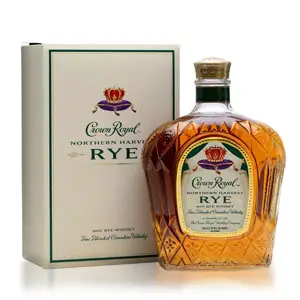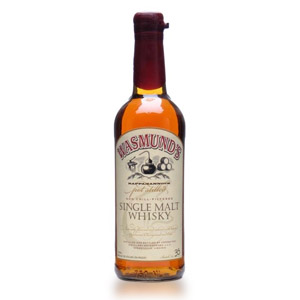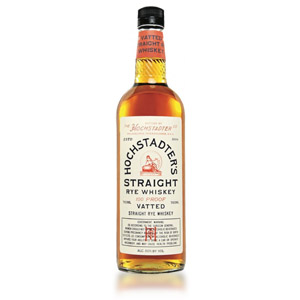Kentucky Bourbon Distillers is a big name behind the scenes in the recent renaissance of American bourbon and rye. KBD, once the Willett Distillery Company, hasn’t actually distilled anything since the 1980s. Until now, that is. KBD bottles several brands using whiskey distilled at (probably) Heaven Hill Distillery and LDI including Noah’s Mill, Rowan’s Creek, Old Bardstown, Johnny Drum, and their premium and single-barrel label, Willett. Now after more than 30 years of bottling other peoples’ juice, Willett under the ownership of the Kulsveen family has bottled the first whiskey – a 2 year-old cask-strength rye – distilled at its refurbished distillery in Bardstown, Kentucky.
This particular rye underwent its first distillation on a column still and a second distillation on a copper pot still, from a combination of two mashbills (74% rye, 11% corn, 15% malted barley and 51% rye, 35% corn, 15% malted barley, with more of the first mashbill used). The distillate went into American white oak charred barrels for two years at the Willett property, and was bottled without chill-filtration.
Did I mention this is 2 years old? In this era of mediocre NAS bottles championed by the cause of the “age doesn’t matter” marketers, it’s refreshing to see a young whiskey advertised with its stated age and despite its youth. If more people taste young whiskey this good, then more people will be willing to accept young whisky on the shelf. Then, we can finally stop pretending that NAS is the solution to marketing ‘young’ whiskey. Less deception in bottle labeling makes me a happy customer. I say don’t pretend that age doesn’t matter by removing the age statement on the bottle, but instead show people that even minimum-aged spirits can be phenomenal when carefully crafted. Nothing will kill the Older is Better myth faster than amazing rye with a big, bold “2 years” on the label. Good on ‘ya, Willett.
Now, I have a particular fondness for young rye that actually tastes like rye. I want big eucalyptus, wintergreen, or pine, and I want spicy ‘sharp’ notes of cinnamon, cardamom, and anise. Occasionally, some caraway (think rye bread) is nice too. Let’s see how Willett’s new rye shapes up…
Nose: Pine! Showers of sappy pine needles. The nose tickle is prominent, but not excessive. Deeper in, I can get a full, round sweetness, a smattering of star anise and cardamom, and a palpable sense that this is carefully made, genuine rye whiskey.
Palate: Thin body. At full cask strength, the burn is (as expected) eye-watering. Then, there are waves of minty wintergreen Tic-Tacs, sweet cereal grains, and malted milk balls (minus the chocolate).
Finish: Medium-long. A baseline of caramel malt syrup underlies more pine and wintergreen. As the sweetness fades, a little caraway and the remnants of anise linger, with a slight astringent tannin. No bitterness to speak of.
With Water: A much-needed splash of water reveals a dusty spice-bin, redolent with clove and nutmeg. On the palate, the burn is much reduced – a relief – and one is able to focus on the sweet grains and sharp spices of true rye whiskey. The finish is also somewhat spicier – with powdered cinnamon finally making an appearance.
Overall: A case-study in rye whiskey. Rye is (in my opinion) best serviced by brief aging (two year is perfect) and at cask strength. This is the holy convergence of eclectic, robust, sippable whiskey and perfection for period cocktail mixing. When you use a “real” rye whiskey like this, the rye elements shine through the cocktail, marrying perfectly with bitters, and the high proof gives the drink body and substance. This type of rye makes for a snappy, poignant cocktail instead of a muddy sweet one. I’m very happy that Willett is finally able to distill their own juice, and doubly happy that the juice is SO GOOD.









First impression: Hot, weird flavors, really unpleasant.
I’ll come back to it and see what I think.
I really enjoyed this one. Makes a great sazerac.
[…] Source: scotchnoob.com […]